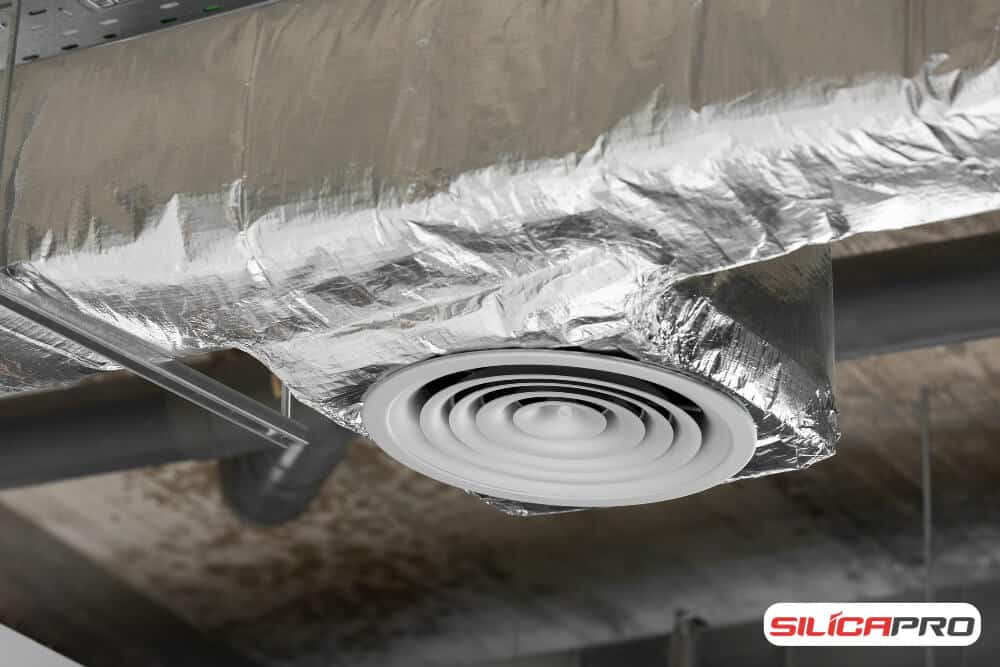Many types of materials are useful in the HVAC field. All of these materials have advantages and disadvantages. One of the materials commonly used is fiberglass. This material is one of the most affordable options. However, fiberglass has significant benefits such as anti-corrosive properties and thermal insulation, making it highly popular in the HVAC industry. But the question remains: are fiberglass ducts safe?
Contents
Are Fiberglass Ducts Safe? Here are the Facts!
Generally, there is no literature that definitively states fiberglass is dangerous when properly installed and maintained. This suggests that fiberglass is safe for HVAC use when appropriate precautions are taken. However, the installation process and regular maintenance are critical factors in ensuring safety.
It’s normal to be concerned about the quality of the air passing through fiberglass ducts, especially in terms of the impact on respiratory health. To ensure safety, fiberglass ducts must meet a range of tests and standards, such as:
- Water vapor absorption: The material must resist water vapor, preventing the growth of mold and mildew.
- Resistance to bacteria, fungus, and rust: Properly tested fiberglass ducts can prevent harmful microorganisms from growing within the ducts.
- Temperature stability: Fiberglass ducts should withstand a wide range of temperatures without degrading.
- Odor control: High-quality fiberglass does not emit unpleasant odors.
- Thermal conductivity: Fiberglass is an excellent insulator, helping HVAC systems maintain desired temperatures more efficiently.
- Sound absorption: Fiberglass has sound-dampening properties, reducing noise within HVAC systems.
- Fire resistance: Fiberglass ducts must pass fire resistance tests to ensure safety during high-heat situations.
Health Impact of Fiberglass in HVAC Systems
Fiberglass has been extensively studied, and the International Agency for Research on Cancer (IARC) has classified fiberglass as “not classifiable as a human carcinogen“. However, some factors must be considered to ensure health safety:
- Fiber size and inhalation risk: Fibers smaller than 3 micrometers (µm) are considered respirable and can penetrate deep into the lungs. However, fiberglass fibers used in HVAC systems are typically larger than this size, making them less likely to be inhaled
- Self-fusing properties: Over time, fiberglass fibers can fuse together, reducing the risk of fibers becoming airborne.
- Long-term exposure: Current studies show no definitive link between exposure to fiberglass in HVAC systems and serious respiratory diseases, such as lung cancer or pulmonary conditions. There are no proven cases linking air passing through fiberglass ducts to lung diseases or cancer.
- Comparison to non-insulated buildings: Studies comparing air quality in insulated vs. non-insulated buildings find no significant difference, debunking the idea that air quality is worse in buildings using fiberglass insulation.
Key Considerations for Fiberglass Duct Safety
When moving into a new home or building previously occupied by others, it’s crucial to check the condition of the fiberglass ducts. Are they still in good condition, or do they show signs of damage or deterioration? Fiberglass ducts may need to be replaced if they are no longer functioning as intended.
Regular cleaning and inspection are also important. Although duct cleaning can help, it may not restore older fiberglass ducts to their original state. At some point, replacement is necessary to maintain air quality and system efficiency.
Professional Inspection and Installation
Hiring a qualified HVAC professional for duct inspection and installation is crucial. Some workers may only perform a superficial inspection, assuming everything is in good condition, while underlying issues could remain undetected. As a building owner, it’s essential to make informed decisions and ensure your HVAC system is thoroughly inspected by trusted professionals.
Best Uses for Fiberglass Ducts

Fiberglass ducts are not only used in residential homes but also in commercial and industrial settings due to their durability and cost-effectiveness. But how long can fiberglass ducts last without needing replacement?
The lifespan of fiberglass ducts depends on several factors, including the specific type of fiberglass used, the quality of the installation, and the level of maintenance. Different grades of fiberglass have varying levels of durability. Poor installation or neglecting routine maintenance can shorten the lifespan of fiberglass ducts significantly.
Factors influencing the longevity of fiberglass ducts include:
- Environmental conditions: High humidity or frequent temperature fluctuations may cause wear and tear over time.
- Maintenance routines: Regular inspections, cleaning, and timely repairs can extend the life of fiberglass ducts.
- Installation quality: Professional installation is critical for the long-term performance of fiberglass ducts. Incorrect installation can lead to premature failure.
Conclusion
Fiberglass ducts offer a practical and affordable option for HVAC systems. In addition to asbestos and other materials, fiberglass is commonly used for insulation, heat barriers, walls, and air ducts. To maintain safety, especially regarding respiratory concerns, it’s important to regularly inspect and, when necessary, replace damaged ducts. This is particularly true if your fiberglass ducts lack an additional protective layer between the fiberglass and the air being circulated.
To minimize health risks, it is essential to have a professional assess the condition of your ducts. A proper inspection, at least once a year, is recommended to ensure that the ducts remain in optimal condition and that the air quality in your building is safe for everyone.
